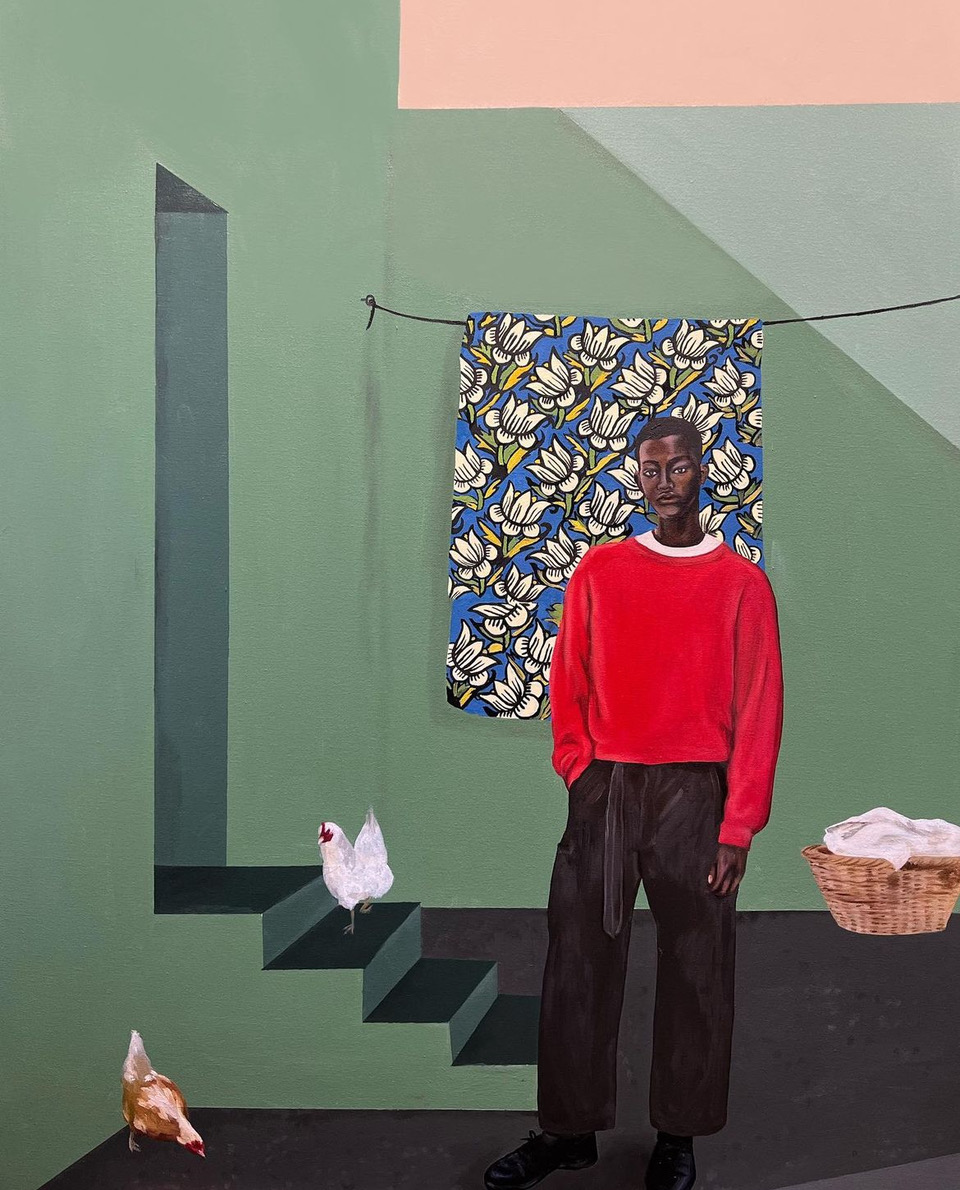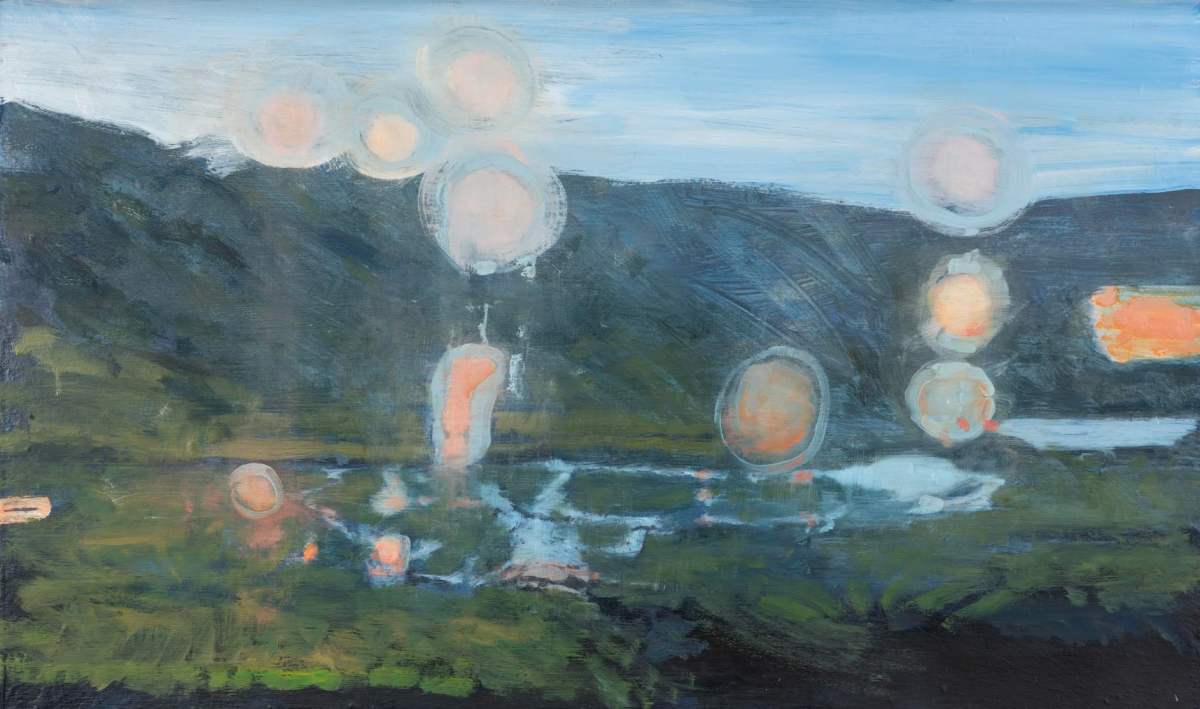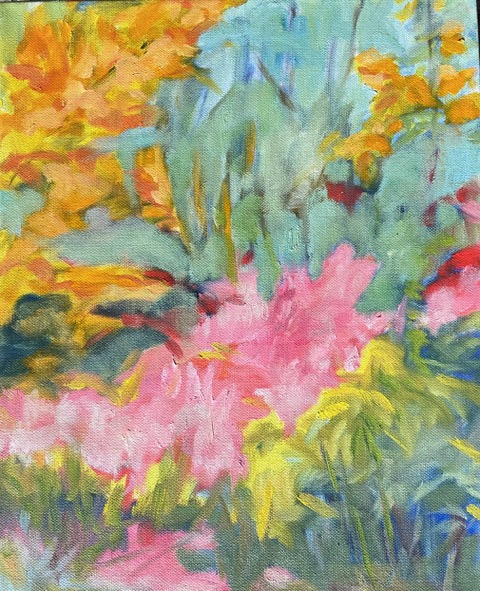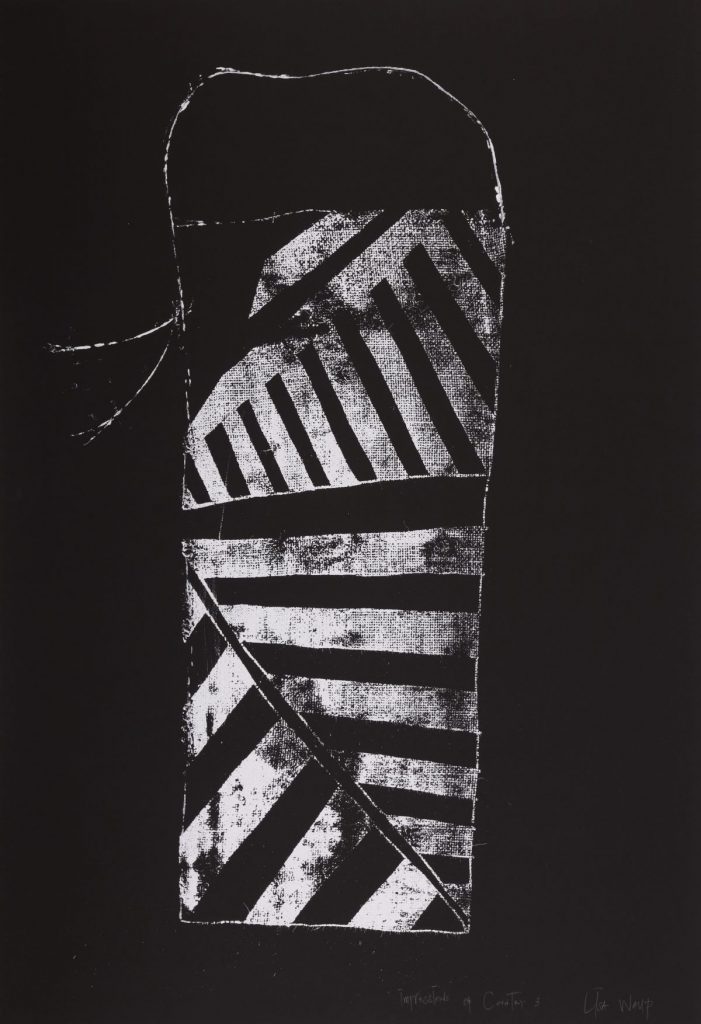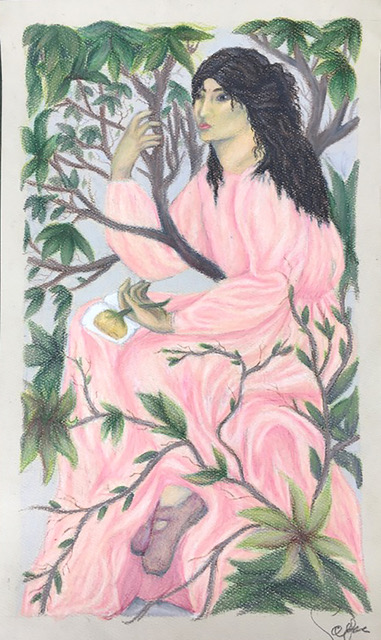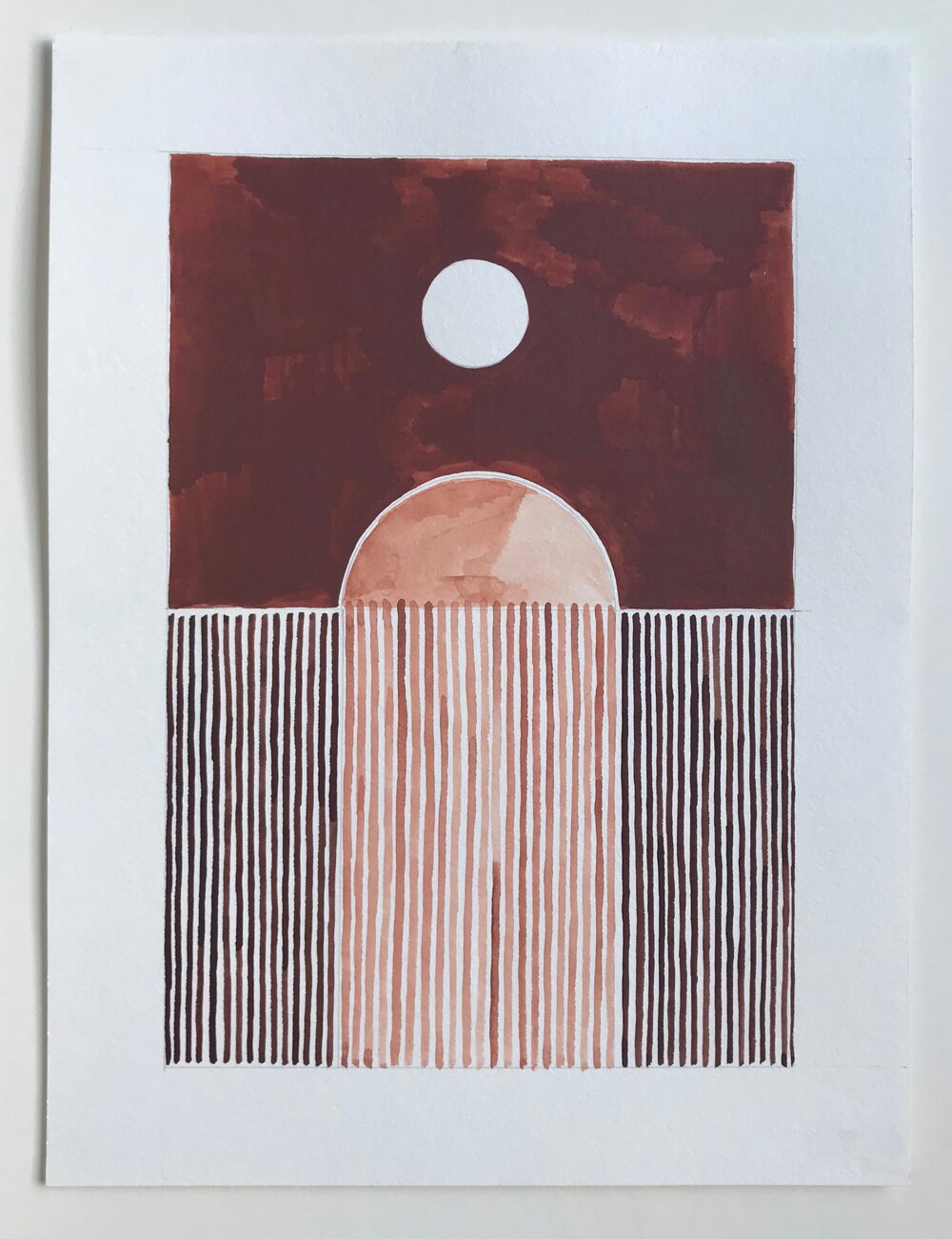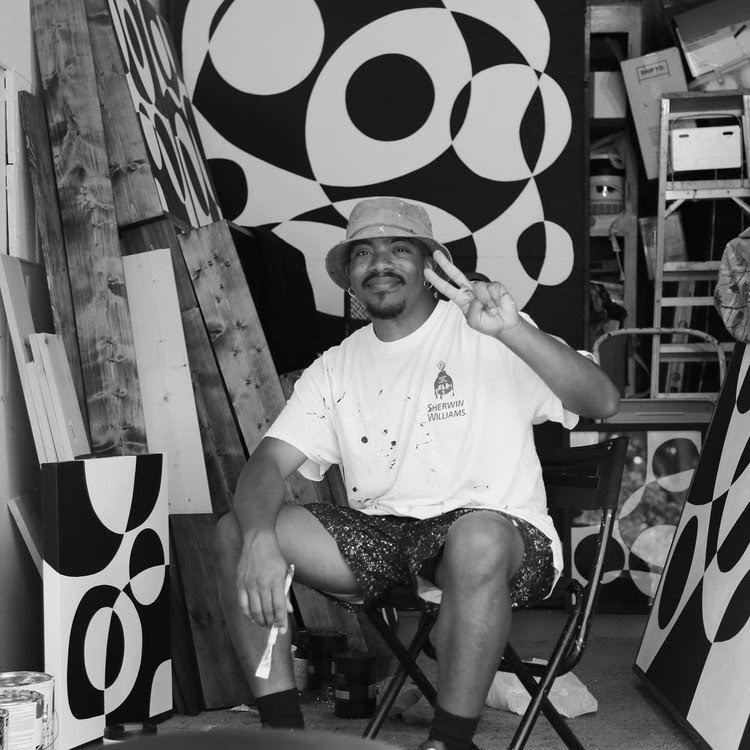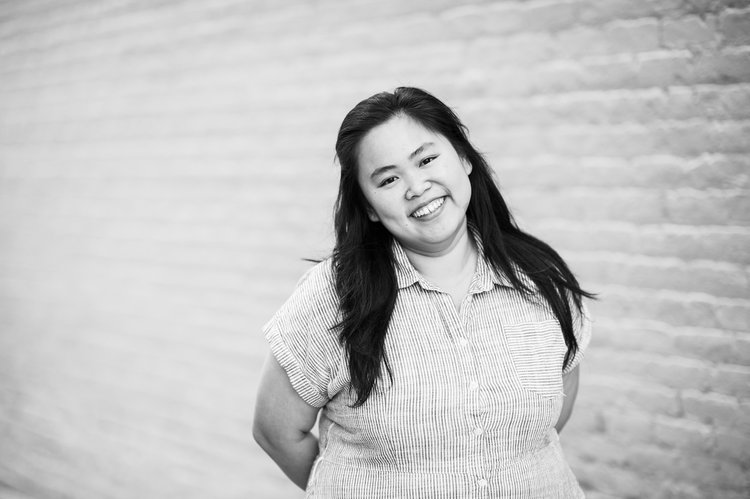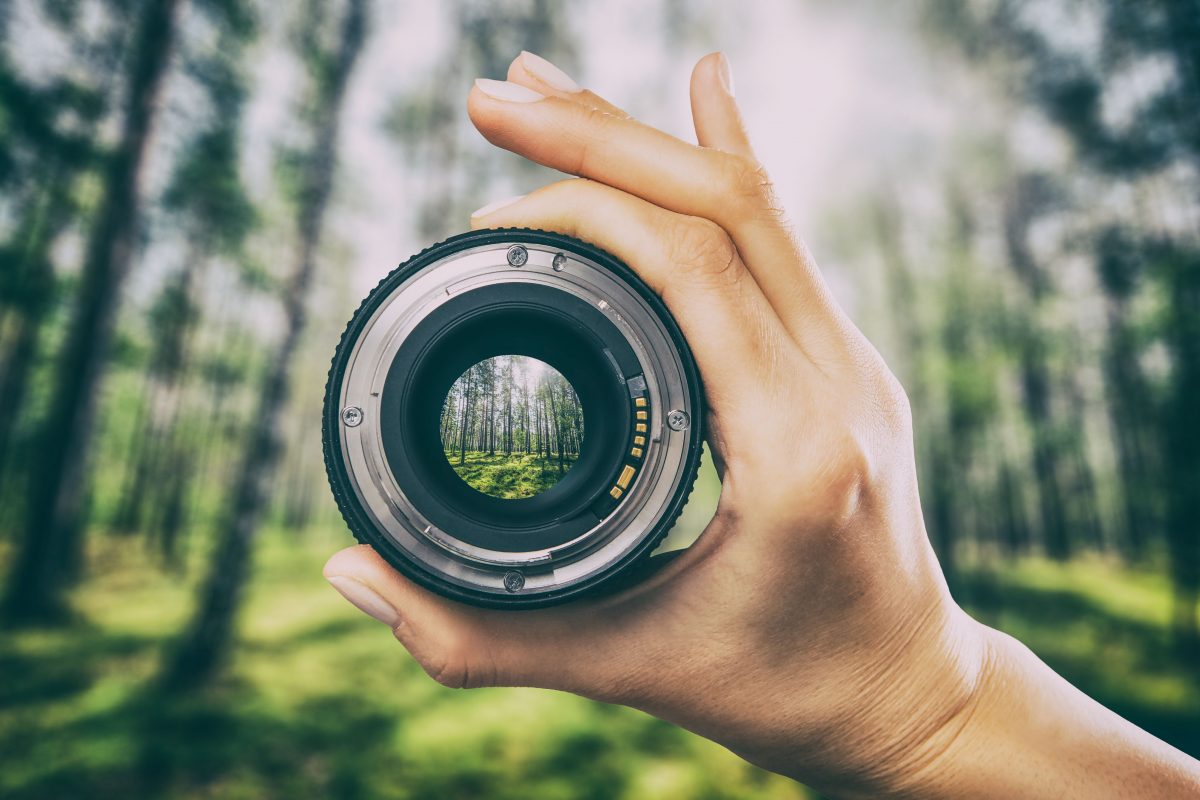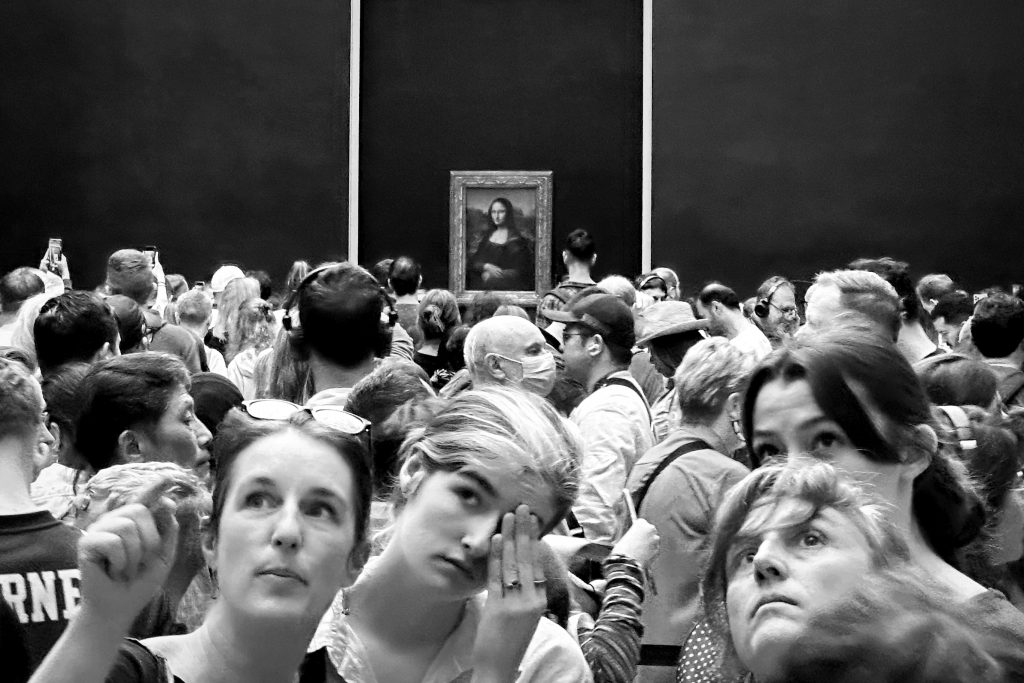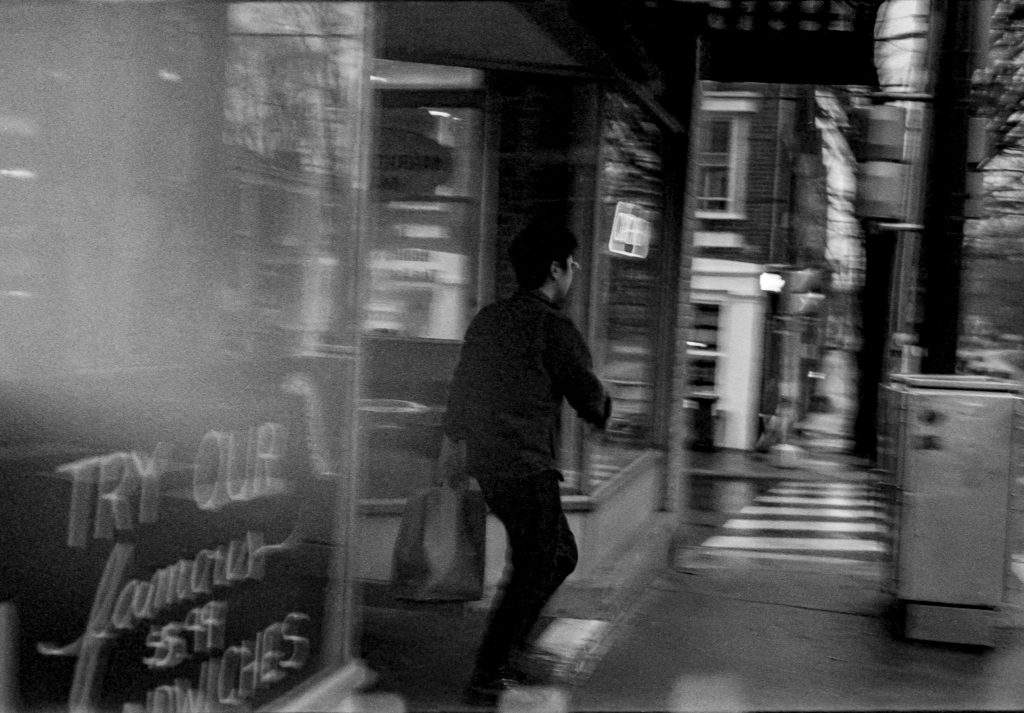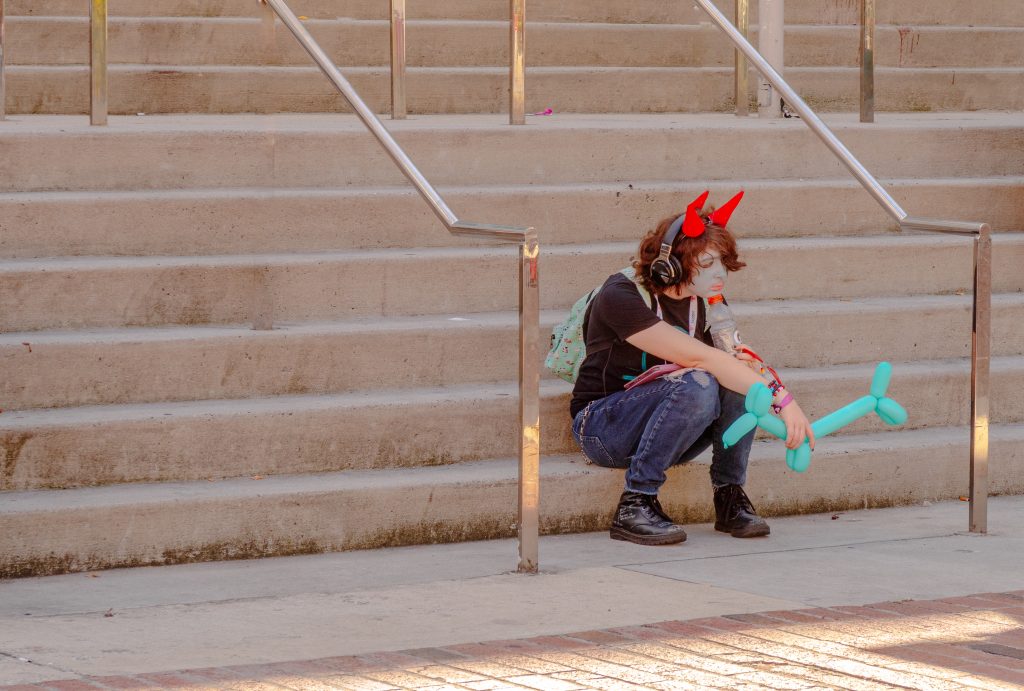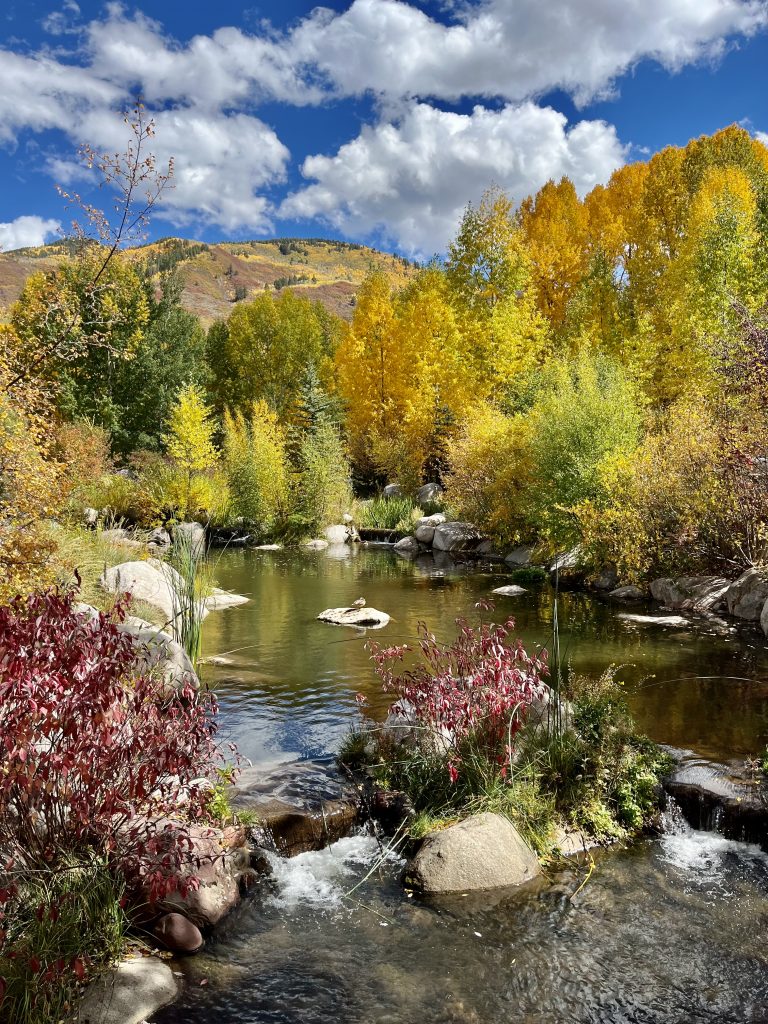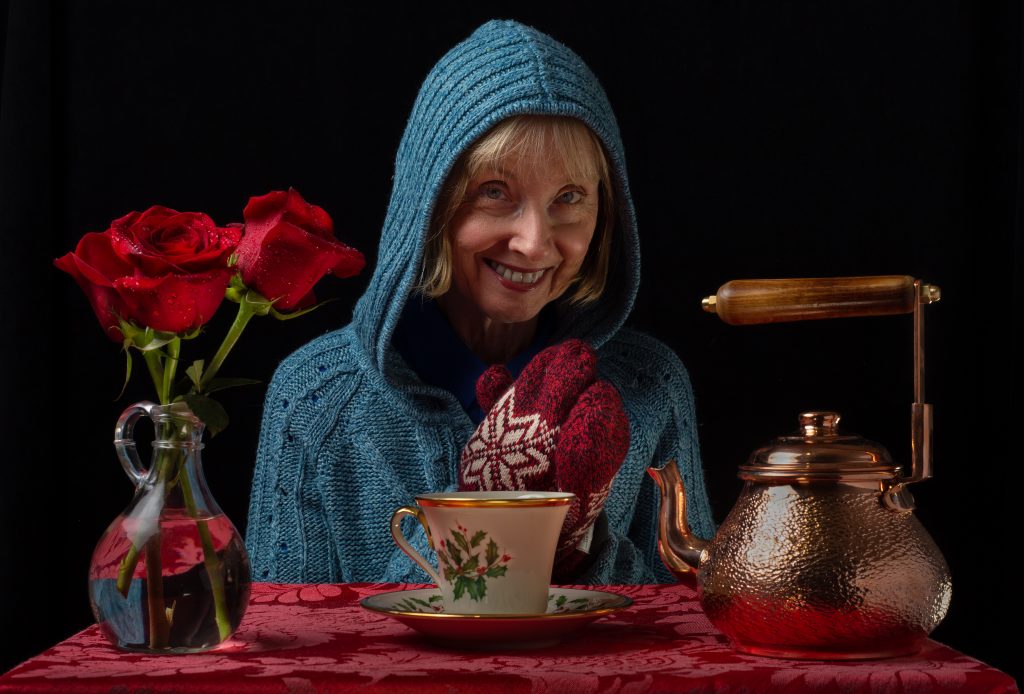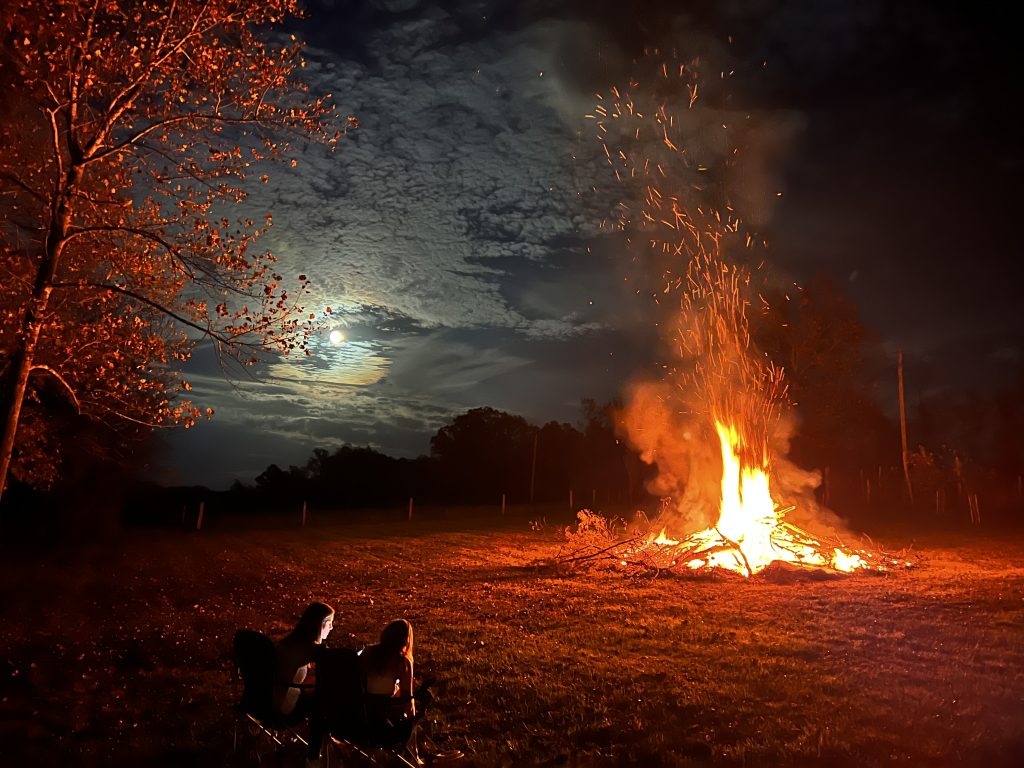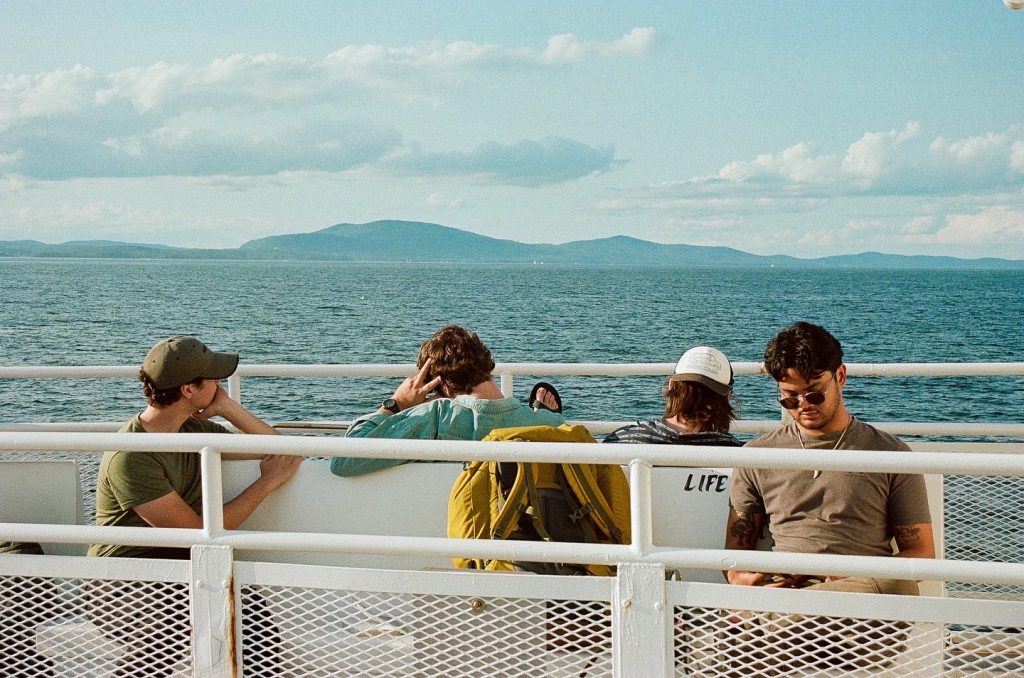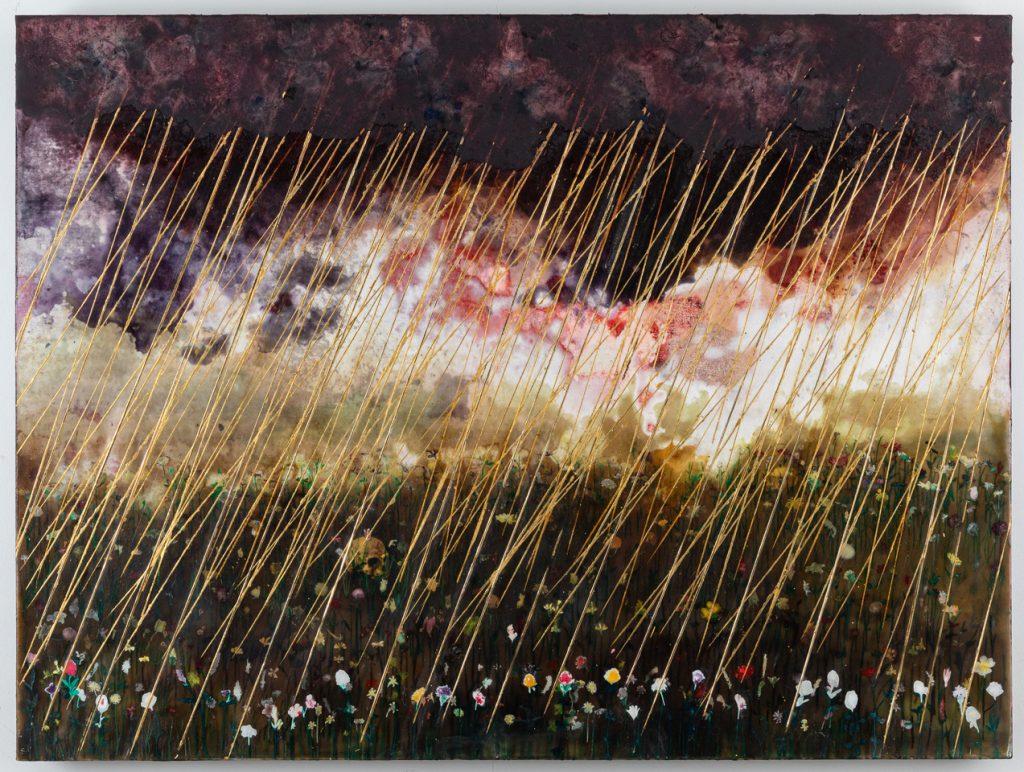The John P. and Stephanie F. Connaughton Gallery at the McIntire School of Commerce might not be on every Charlottesville art lover’s radar, but it should be. The gallery typically presents three shows each year with two artists per show who are invited to apply by McIntire Art Committee members. In most cases, McIntire purchases work from the exhibiting artist to add to the school’s permanent collection, now numbering over 80 pieces and hung in public spaces throughout the Rouss & Robertson Halls complex.
Currently at Connaughton is the work of Uzo Njoku. A 2019 UVA graduate, Njoku was born in Lagos, Nigeria, and moved to the United States when she was 7. At UVA, Njoku started out as a statistics major but switched to studio art after her first year.
She is now a one-woman art-producing and marketing powerhouse based in New York City. “Uzo’s journey from statistics major to a self-styled ‘artpreneur’ holds such appeal and also valuable lessons for students in both the arts and in commerce,” says Dorothy C. Kelly, McIntire’s Robert B. Hardaway, Jr. Lecturer of Personal Finance, who sits on the art committee and is an admirer of Njoku’s oeuvre as well as her entrepreneurial skills.
You only have to look at Njoku’s sleek website to see the breadth of her activities; beyond painting, there are events and a prodigious array of Njoku merch—coloring books, calendars, mugs, T-shirts, and outerwear—plus her own wallpaper designs and a mural commission for Tommy Hilfiger. Not bad for a recent college graduate.
Njoku’s vibrant, large format works feature broad, flat planes of paint. For the most part, she takes a stylized approach and uses a bold palette of bright colors together with black to create a compelling graphic quality.
In many of her pieces, Njoku incorporates patterns, as their detail contrasts nicely with the more simplified passages. Pattern is very important to Njoku, who uses it to incorporate Nigerian culture into her work. She uses it in a similar fashion to Kehinde Wiley, as backdrops to portraits, but she favors traditional wax cloth patterns, such as in “A New Perspective,” or distilled versions inspired by them in “A Very Nice Girl,” as opposed to Wiley’s lush floral expanses.
For Njoku, these designs extend beyond visual flourish or cultural reference to imbue the pieces with movement. “The Weight of Ink” is a self-portrait of the artist, identified by the “U” tab on the end of her turtleneck zipper. She’s positioned against an intense teal background and wears a hot pink sweater under an orange shirt and red jacket. Features like ribbing, stitching, and buttons are rendered in careful detail. Two yellow circles denote earrings. What makes the painting captivating is the face, which is largely nonexistent. Is it that she is laughing so hard that her eyes are squinted shut? All we can see against the black of her skin and hair are her teeth, yet the title suggests a more somber interpretation. Is it a comment about Black invisibility, or the weighty responsibility of presenting the Black experience? One thing is certain: The title suggests that there’s more here than meets the eye.
With the “The Young Man,” Njoku produces a psychologically charged image—a result of the melancholia that seems writ on the subject’s face. Sporting a bright red sweater and jeans, he stands before a structure composed of various geometric shapes that form walls, steps, and a doorway. It feels confined, and one wonders if it’s intended to reflect his situation and, perhaps, the stasis that governs his life. Languor is conveyed by a couple of chickens pecking at the ground. Njoku executes these in a more painterly fashion, using blurred brushstrokes to produce feathers. A full laundry basket is positioned against the back wall, and behind the youth hangs a showy floral cloth. Njoku makes it pop by painting it like a self-contained rectangular pattern, as opposed to laundry drying on a clothesline.
The largest work in the show, “Indefinite Space,” is an eye-popping tour de force of motifs and portraiture. Two female figures recline against a vivid pattern of blue, yellow, red, and white that explodes across the canvas. Njoku ratchets up the effect by introducing another similarly hued pattern that butts up against the dominant one. Behind these, she paints a background that looks like a stylized version of deep space. The women, whose faces are rendered with deft sensitivity, confront the viewer with powerful gazes. Each wears African-style head wraps and large gold earrings; one has on fashionably ripped jeans and sneakers, while the other sports a nose ring. The clothing positions them in contemporary times, yet the figures’ poses recall classical renderings of Greek gods and, together with the celestial background, suggest divinity.
The exhibition, which includes multiple works featuring strong women, opened during March’s Women’s History Month. The fact that the strong women in this show are also Black is especially important, given its location at a school that produces future movers and shakers within the realms of commerce and power.
